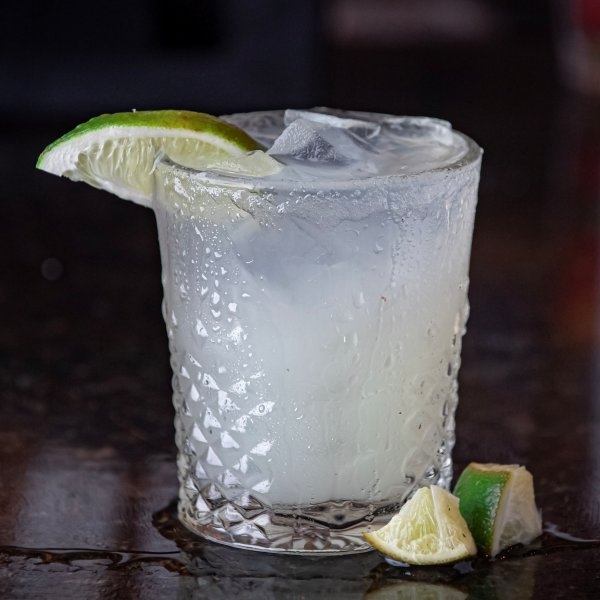Mexican food is more than just a cuisine; it's a reflection of the vibrant culture, history, and traditions of Mexico. From the bold flavors to the unique cooking techniques, Mexican food has become a beloved part of the global culinary scene. In this article, we will dive into the world of Mexican cuisine, exploring its rich history, popular dishes, regional variations, and more.
The Rich History of Mexican Cuisine
Mexican food is a fusion of indigenous Mesoamerican and European influences. It traces its roots back to ancient civilizations like the Aztecs and Maya, who cultivated crops like maize, beans, and chilies. With the Spanish conquest in the 16th century, new ingredients such as beef, pork, and dairy were introduced. This blend of cultures laid the foundation for the diverse Mexican cuisine we know today.
Popular Mexican Dishes
Tacos: A Mexican Icon
Tacos, with their various fillings and toppings, have gained international fame. They are versatile, convenient, and deeply ingrained in Mexican culture.
Enchiladas: A Flavorful Delight
Enchiladas are corn tortillas filled with meats, beans, or cheese, and covered in a savory sauce. Their flavors vary across regions, making them a dynamic culinary experience.
Guacamole: The Perfect Dip
Guacamole, a creamy blend of avocados, lime, and spices, is a favorite appetizer. It's simple to make and elevates any Mexican meal.
Chiles Rellenos: A Spicy Treat
Chiles Rellenos are stuffed peppers, usually with cheese, meat, or beans, and are a delightful spicy delicacy.
Regional Variations in Mexican Cuisine
Northern Mexico
Northern Mexican cuisine is known for beef dishes like carne asada and cabrito. Flour tortillas are preferred, and the flavors are influenced by the proximity to the United States.
Central Mexico
Central Mexico is the heart of Mexican cuisine, famous for dishes like pozole, mole, and tamales. Corn tortillas are dominant, and traditional flavors shine.
Southern Mexico
Southern Mexico's cuisine is characterized by its extensive use of spices, chocolate, and tlayudas, which are large, thin tortillas. Oaxaca, in particular, is celebrated for its diverse culinary heritage.
Ingredients that Define Mexican Cooking
Corn, beans, tomatoes, and avocados are the cornerstones of Mexican cooking. Along with these staples, Mexican dishes incorporate an array of herbs, spices, and chilies, which provide a complex and exciting flavor profile.
Traditional Cooking Techniques
The Art of Mole Making
Mole is a complex sauce made with a blend of chilies, chocolate, and spices. Each region has its unique mole, and the process of making it is an art form.
Tlayudas: Oaxacan Tortillas
Tlayudas are large, thin tortillas often topped with beans, cheese, and salsa, creating a crispy and savory delight.
Mexican Food and Festivals
Day of the Dead: A Culinary Celebration
The Day of the Dead, or Dia de los Muertos, is a festival where food plays a central role. Families create altars with offerings of traditional dishes and sugar skulls to honor their departed loved ones.
Mexican Food Worldwide
Mexican Restaurants in the U.S.
Mexican cuisine has made a significant mark in the United States, with countless Mexican restaurants serving up dishes ranging from street tacos to gourmet fusion creations.
Fusion Cuisine: Mexican Flavors around the World
Mexican flavors have found their way into various cuisines globally, creating exciting fusion dishes that pay homage to the original while adding unique twists.
The Art of Making Margaritas
Classic Margarita Recipe
Margaritas are the perfect complement to Mexican dishes. Learn how to make the classic version with tequila, lime juice, and orange liqueur.
Healthy Eating Options
The Balance of Mexican Cuisine
While MEXICAN FOOD restaurant can be indulgent, there are plenty of healthy options to explore. Dishes rich in vegetables, lean proteins, and fresh salsas offer a balanced meal.
Challenges and Tips for Cooking Mexican at Home
Balancing Spice Levels
Balancing the heat of chilies is crucial in Mexican cuisine. Discover tips for controlling spice levels in your dishes.
Perfecting Your Salsa
Salsa is a fundamental part of Mexican cuisine. Master the art of making flavorful and balanced salsas at home.
Mexican Food and the Senses
Aromas and Flavors
The enticing aromas and bold flavors of Mexican dishes engage all the senses, creating a memorable dining experience.
The Social Aspect of Mexican Dining
Family and Food
Mexican meals are often a communal affair, bringing families and friends together. It's not just about the food; it's about the shared experience.
The Future of Mexican Food
Mexican cuisine continues to evolve and gain global recognition. Its rich history and diverse flavors ensure it will remain a culinary treasure for generations to come.
Conclusion: Savoring the Magic of Mexican Food
Mexican food is a testament to the power of culture, tradition, and culinary artistry. Whether enjoyed in a family gathering, at a local taqueria, or in a fine dining setting, the flavors of Mexico have a unique and irresistible charm. It's a cuisine that celebrates life, and we should savor every bite.
FAQs
1. What is the spiciest Mexican dish?
- One of the spiciest Mexican dishes is Habanero Salsa, which features the fiery habanero pepper.
2. Can I make mole sauce at home?
- Yes, you can make mole sauce at home, but be prepared for a time-consuming and intricate cooking process.
3. Are there vegetarian options in Mexican cuisine?
- Absolutely! Mexican cuisine offers a variety of delicious vegetarian dishes, such as bean burritos and vegetable tamales.
4. What's the difference between Tex-Mex and authentic Mexican food?
- Tex-Mex cuisine is an Americanized version of Mexican food with its own unique twists. Authentic Mexican food is more traditional and varies by region.
5. What's the best way to enjoy Mexican food at home?
- To fully enjoy Mexican food at home, try cooking a few different dishes, including tacos, guacamole, and margaritas. Create a festive atmosphere to complete the experience.


